Tragic Death of Todd Ewen Raises Old Questions Anew
The sticks drop. The gloves are shaken off onto the ice. Two players square off. The crowd stands and roars. It’s a fight!
C’mon! We’ve all been there. If you’re a hockey fan, there is something intrinsically satisfying about a fight. Two players, sometimes more, physically battle to take atonement for wrongs inflicted – real or perceived. The old cliché, “I went to a fight and a
hockey game broke out,” didn’t come out of nowhere. We asked for it. Maybe not in our words, but definitely in our actions. We feel
them fighting for our justice. Like Romans in the Coliseum we’ve come to see spilled blood and these gladiators of the ice do our bidding. It’s like a hot ember is smoldering inside us that no one lit, it’s just always been there waiting for the fuel to make it burst into hot flames. I say this because I have witnessed it in my own children.
I have taken my kids to professional hockey games since they were young. My now 24-year-old son and 20-year-old daughter love hockey for the game and the competition. They watch the moves, the plays and they want their team to win. My 18-year-old daughter, on the other hand, well let’s just call her “Bloody Mary.” Oh, she watches the game as intently as her older siblings, but she’s not waiting for the next great play. I don’t think she really cares if our team wins. Any game where there is little to no fighting is a loss in her opinion. At one game last year there was a bench-clearing brawl. My youngest was furious. She had opted to stay home that night.
The point of all this is that we have come to expect the fights no less than power plays and penalties. They are a form of entertainment that enhances the overall game experience; but at what cost? Do we forget that the fights are fought by real people, who feel real pain, and suffer real injuries?
On Saturday, September 19, Todd Ewen, a veteran of 518 NHL games in the 80’s and 90’s committed suicide at the age of 49. During his 11-year career, which included stints with St. Louis, Montreal, and Anaheim, Ewen played the role that is commonly referred to in hockey as an “enforcer,” a “goon.” He racked up over 1,900 penalty minutes and had 150 or more fighting majors in his career. His role, like the role of all enforcers, was to deal out punishment to opposing players that had wronged a member of his team. His job required him to beat and be beaten, to bloody and be bloodied, and to take it all without a whimper game after game. No doubt the repeated blows to the head and the countless concussions suffered led to the depression that he battled for years and that finally took his life.
Todd Ewen is not the first to meet this fate among enforcers; in fact he is only the most recent.
In the Spring and Summer of 2011, 3 young hockey enforcers met similar fates. The first, in May of that year, was 28-year-old Derek Boogaard. The “Boogeyman,” as he was called, was an enforcer for the New York Rangers and the Minnesota Wild before that. Found dead in his apartment in Minneapolis, his cause of death was a fatal mixture of Oxycodone and alcohol. Boogaard was a highly feared enforcer in the NHL. At 6-foot-7 and 260+ pounds he was a big man who could take a lot of punishment and deal out even more. Continually in pain from the multiple injuries he had suffered over the years, he became addicted to alcohol and pain killers and eventually went through the NHL’s addiction treatment program for players. By the time he was traded to the New York Rangers, however, it was obvious that he was already slowing down and that he was suffering the effects of repeated blows to the head and concussions. His sobriety didn’t last, and in the end his self-medicating caught up with him.
In August of that same year, 27-year-old Rick Rypien was found dead by his own hand at his home in Crowsnest Pass, Alberta, Canada. Rypien had played parts of the previous six seasons with the Vancouver Canucks and had signed a new contract to play for Winnipeg in the upcoming season. Despite what appeared to be new opportunity in his career, Rypien suffered from depression, something many attributed to repeated concussions, and ultimately took his life.
Not even three weeks after the death of Rick Rypien, Wade Belak took his own life at the age of 35. A 6-foot-5, 225 pound enforcer,
Belak had played for Colorado, Calgary, Toronto, Florida, and Nashville in a career that spanned from 1996-2011. To all outward appearances, Wade was a happy guy with things looking on the up-and-up. He was scheduled to appear on the Canadian reality show “Battle of the Blades,” and he was looking forward to starting a career in broadcasting. Again, it appeared that years of head trauma caused by fighting may have led to the depression that claimed Wade Belak.
Now I will be the first to tell you that I am not advocating the banning of fighting in hockey. It is not only part of the game and its history, but I can’t see how the NHL or any of the other leagues can ban actions that are often spontaneous and arise out of competitive, aggressive play, and adrenaline. I am simply wondering if the era of the “goon” needs to come to an end. There will always be fights for those very reasons I stated before, but is it necessary to have fights that are targeted attacks on particular players? Fights that are pre-meditated or encouraged before an incident ever arises that send the gloves to the ice? Look at the devastating effect that Todd Bertuzzi’s hit had on the career of Steve Moore.
Concussions will continue to happen. All the best technology in the world will never be able to eliminate it completely from the game. Bad hits happen. Players go head first into the boards. Players run into each other or fall to the ice with great force. What of those concussions – the repeated concussions, however – that some players suffer through the accepted use of an enforcer? Perhaps we could curtail those. Yes, I enjoy the fights, but I love the game more than any fight it might offer. The idea that talented young men work so hard to reach the NHL and then suffer such traumatic injury that their lives can be shortened doesn’t seem a reasonable expectation of me, the fan, to ask.
Just since 2002, several active or retired, but young, players have died either by their own hand or by medical conditions that lead you to wonder if there is something more going on. They all had a history of being enforcers or having those tendencies. Terrence Tootoo, Roman Lyashenko, Trevor Ettinger, Bob Probert, Tom Cavanaugh, Wade Belak, Derek Boogaard, Rick Rypien, Steve Montador, and Todd Ewen. That seems like an extraordinarily high number of deaths for our sport.
Hockey is the sport we love. Hockey players are competitive “entertainers” who give us – the fans – what we want. Perhaps we should just be a little more thoughtful about what we ask for.

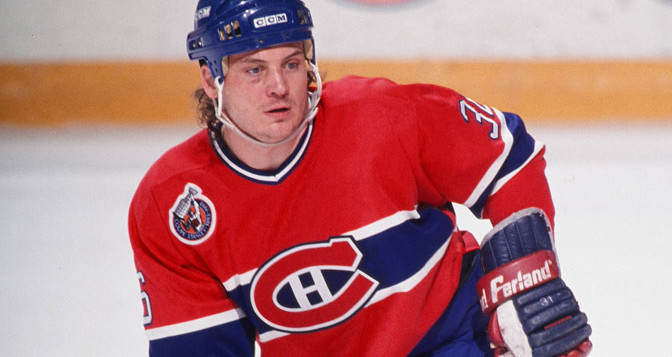
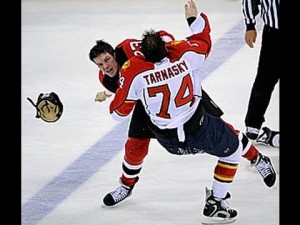

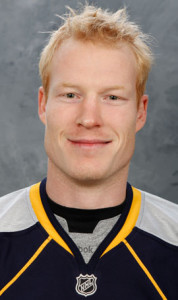
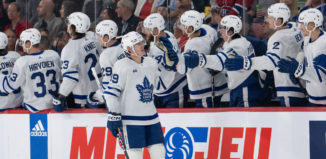
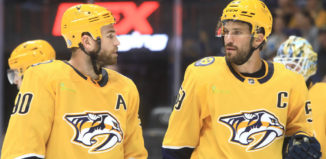











Well written article Gregg. Thank you